Cameras and Sensors for Embedded Vision
WHILE ANALOG CAMERAS ARE STILL USED IN MANY VISION SYSTEMS, THIS SECTION FOCUSES ON DIGITAL IMAGE SENSORS
While analog cameras are still used in many vision systems, this section focuses on digital image sensors—usually either a CCD or CMOS sensor array that operates with visible light. However, this definition shouldn’t constrain the technology analysis, since many vision systems can also sense other types of energy (IR, sonar, etc.).
The camera housing has become the entire chassis for a vision system, leading to the emergence of “smart cameras” with all of the electronics integrated. By most definitions, a smart camera supports computer vision, since the camera is capable of extracting application-specific information. However, as both wired and wireless networks get faster and cheaper, there still may be reasons to transmit pixel data to a central location for storage or extra processing.
A classic example is cloud computing using the camera on a smartphone. The smartphone could be considered a “smart camera” as well, but sending data to a cloud-based computer may reduce the processing performance required on the mobile device, lowering cost, power, weight, etc. For a dedicated smart camera, some vendors have created chips that integrate all of the required features.
Cameras
Until recent times, many people would imagine a camera for computer vision as the outdoor security camera shown in this picture. There are countless vendors supplying these products, and many more supplying indoor cameras for industrial applications. Don’t forget about simple USB cameras for PCs. And don’t overlook the billion or so cameras embedded in the mobile phones of the world. These cameras’ speed and quality have risen dramatically—supporting 10+ mega-pixel sensors with sophisticated image processing hardware.
Consider, too, another important factor for cameras—the rapid adoption of 3D imaging using stereo optics, time-of-flight and structured light technologies. Trendsetting cell phones now even offer this technology, as do latest-generation game consoles. Look again at the picture of the outdoor camera and consider how much change is about to happen to computer vision markets as new camera technologies becomes pervasive.
Sensors
Charge-coupled device (CCD) sensors have some advantages over CMOS image sensors, mainly because the electronic shutter of CCDs traditionally offers better image quality with higher dynamic range and resolution. However, CMOS sensors now account for more 90% of the market, heavily influenced by camera phones and driven by the technology’s lower cost, better integration and speed.
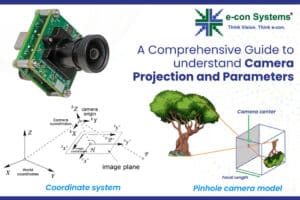
A Comprehensive Guide to Understand Camera Projection and Parameters
This blog post was originally published at e-con Systems’ website. It is reprinted here with the permission of e-con Systems. Understanding camera projection and parameters is essential for mapping the 3D world into a 2D representation. This blog delves into key concepts like camera projection, intrinsic and extrinsic parameters, and distortion correction, offering a clear
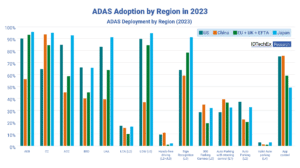
L2+ ADAS Outpaces L3 in Europe, US$4B by 2042
14 ADAS Features Deployed in EU. Privately owned Level 3 autonomous vehicles encountered significant regulatory setbacks in 2017 when Audi attempted to pioneer the market with the L3-ready A8. Regulatory uncertainty quickly stalled these ambitions, delaying the introduction of true L3 autonomy. By 2021, a clearer regulatory framework emerged under UNECE guidelines, affecting Europe and

Removing the Barriers to Edge and Generative AI in Embedded Vision
This blog post was originally published at Macnica’s website. It is reprinted here with the permission of Macnica. The introduction of artificial intelligence (AI) has ushered in exciting new applications for surveillance cameras and other devices with embedded vision technology. Tools like generative AI (gen AI), ChatGPT and Midjourney are augmenting computer vision-based results. At

D3 Embedded to Showcase Innovative Industrial and Physical AI Solutions at NVIDIA GTC
D3 Embedded to demonstrate real-time edge AI solutions built on powerful NVIDIA platforms and frameworks including NVIDIA Isaac™ Perceptor, Holoscan Sensor Bridge, Jetson Orin™, and NVIDIA IGX Orin™, at GTC. Rochester, NY – March 18, 2025 – D3 Embedded announced it will exhibit at NVIDIA GTC at booth 147 in the Industrial & Physical AI
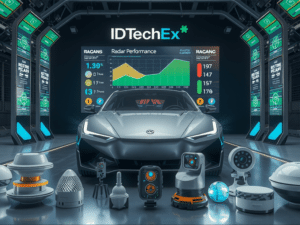
Radar-enhanced Safety for Advancing Autonomy
Front and side radars may have different primary uses and drivers for their innovation, but together, they form a vital part of ADAS for autonomous vehicles. IDTechEx‘s report, “Automotive Radar Market 2025-2045: Robotaxis & Autonomous Cars“, showcases the latest radar developments and explores autonomy leveling up as a result, with Level 2+ asserting itself within
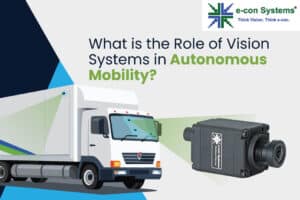
What is the Role of Vision Systems in Autonomous Mobility?
This blog post was originally published at e-con Systems’ website. It is reprinted here with the permission of e-con Systems. Vision systems are crucial for autonomous mobility, enabling vehicles to navigate and respond to their environment. This blog covers key camera types like surround-view, forward-facing, and driver monitoring cameras, highlighting features like HDR, LED Flicker
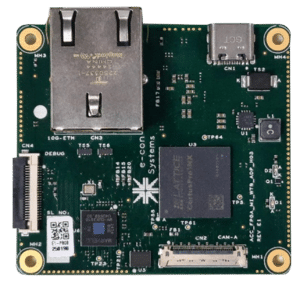
e-con Systems to Unveil the Latest AI Imaging Solutions at NVIDIA GTC 2025
California & Chennai (March 18, 2025): e-con Systems®, a leading provider of embedded vision solutions, is set to showcase its latest innovations at GTC 2025, scheduled from March 18 to 21 at the San Jose Convention Center. Attendees can visit Booth 2107 to experience firsthand how e-con Systems’ cutting-edge AI-driven imaging solutions are poised to
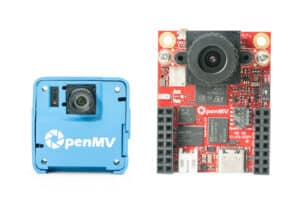
OpenMV Unveils the N6 and AE3: High-performance, Low-power AI Vision Cameras for Makers and Professionals
March 17, 2025, San Francisco, CA – OpenMV is excited to announce the launch of the OpenMV N6 and OpenMV AE3, two groundbreaking machine vision cameras designed to bring real-time AI capabilities to microcontrollers. Backed by years of expertise in embedded vision, OpenMV is making high-performance AI vision accessible to developers, researchers, and hobbyists alike

e-con Systems to Showcase Advanced High Accuracy 1MP ToF Camera and AI-powered 360° Vision Solution at Embedded World 2025
California & Chennai (March 13, 2025): e-con Systems®, a global leader in embedded vision solutions, exhibits its latest advancements in camera technology across diverse industries at Embedded World 2025 in Nuremberg, Germany from March 11-13, 2025. Visitors will get an exclusive look at e-con’s latest innovations, including high-resolution 1MP Time-of-Flight (ToF) camera based on AF0130
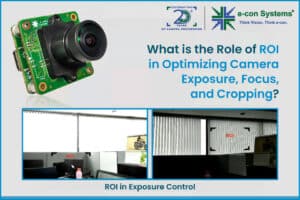
What is the Role of ROI in Optimizing Camera Exposure, Focus, and Cropping?
This blog post was originally published at e-con Systems’ website. It is reprinted here with the permission of e-con Systems. Region of Interest (ROI) helps fine-tune camera performance so that exposure, focus, and cropping can align with specific parameters and deliver high-quality imaging performance. Discover how ROI coordinates impact these parameters for ensuring the best

